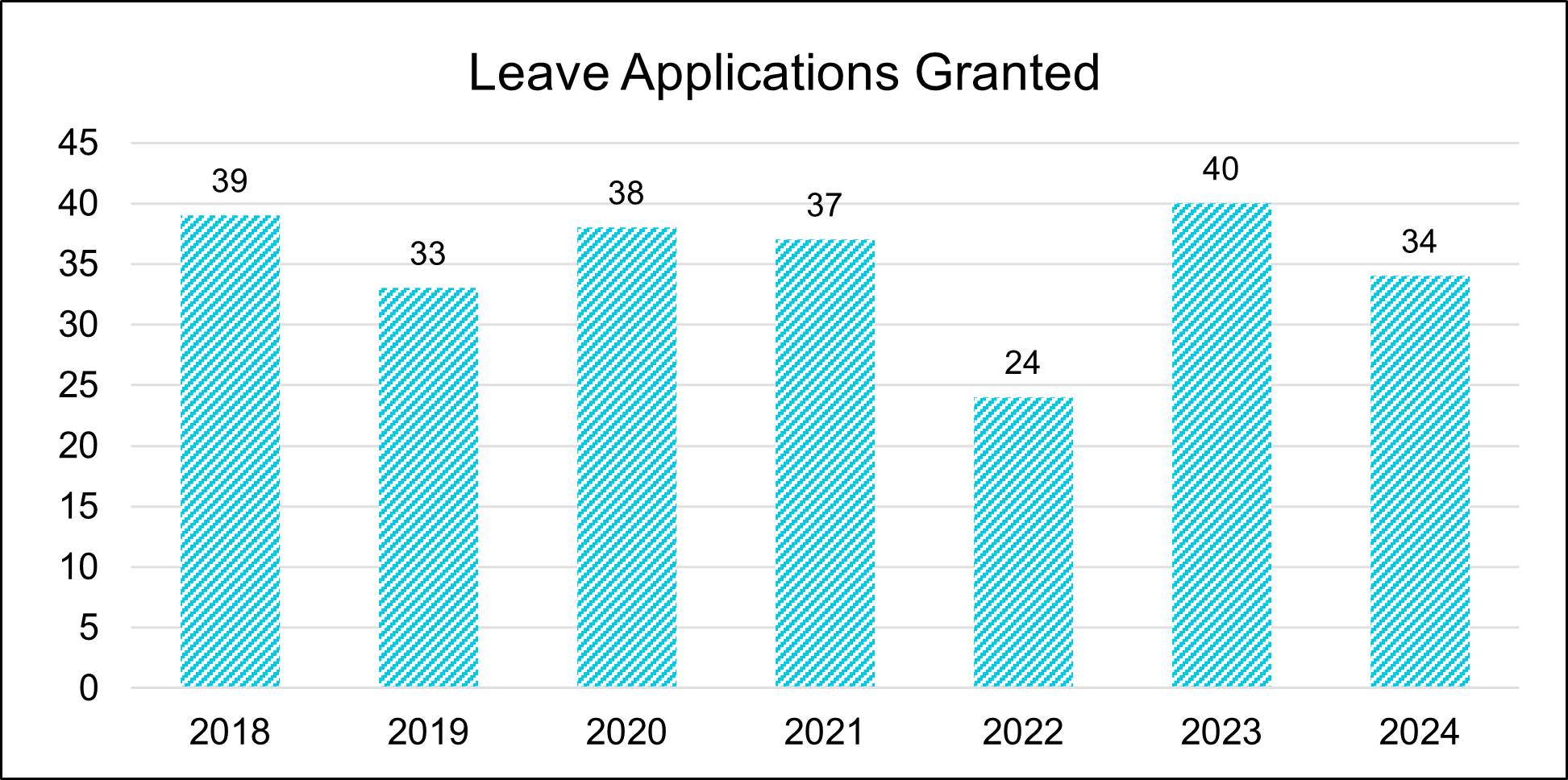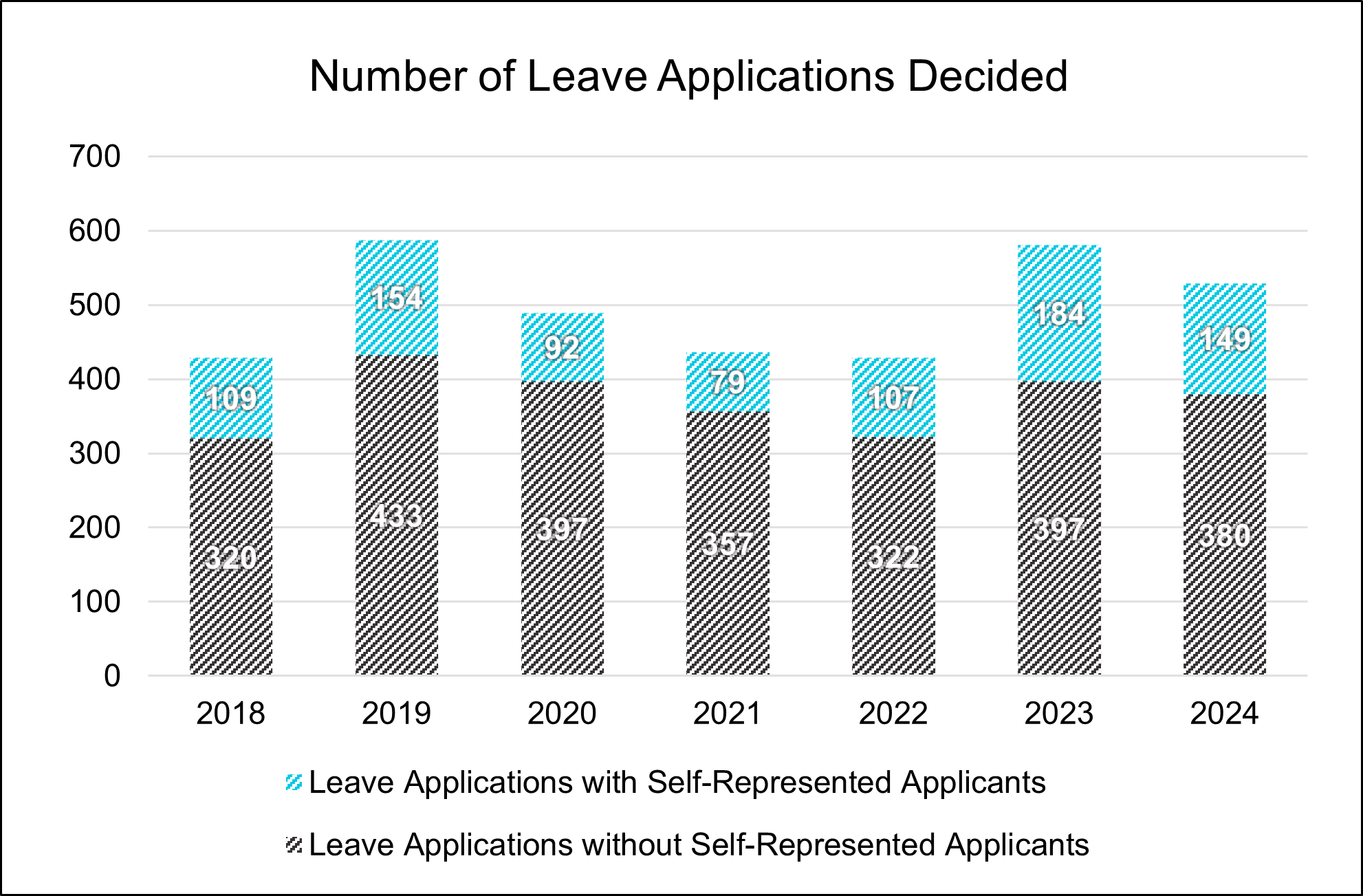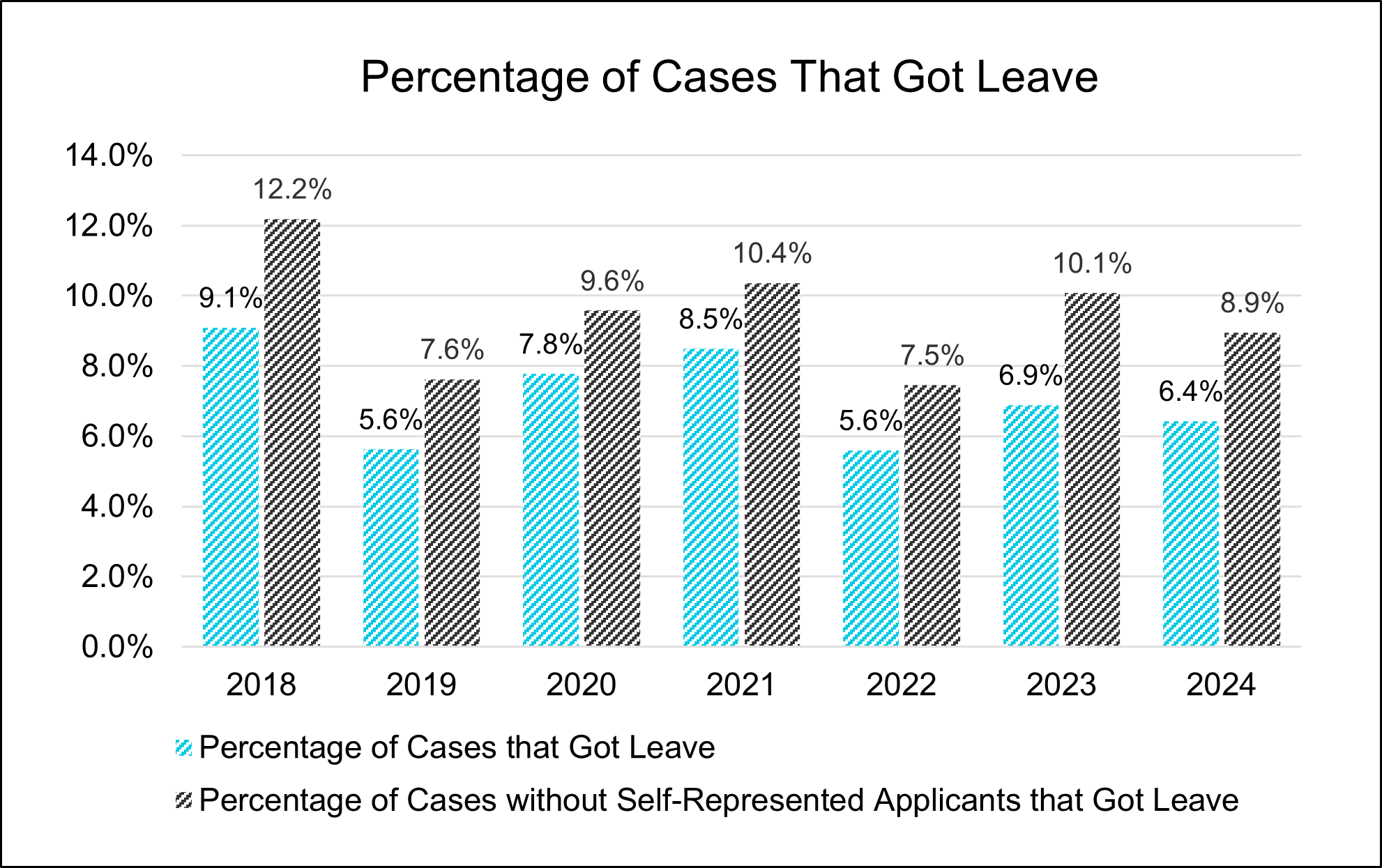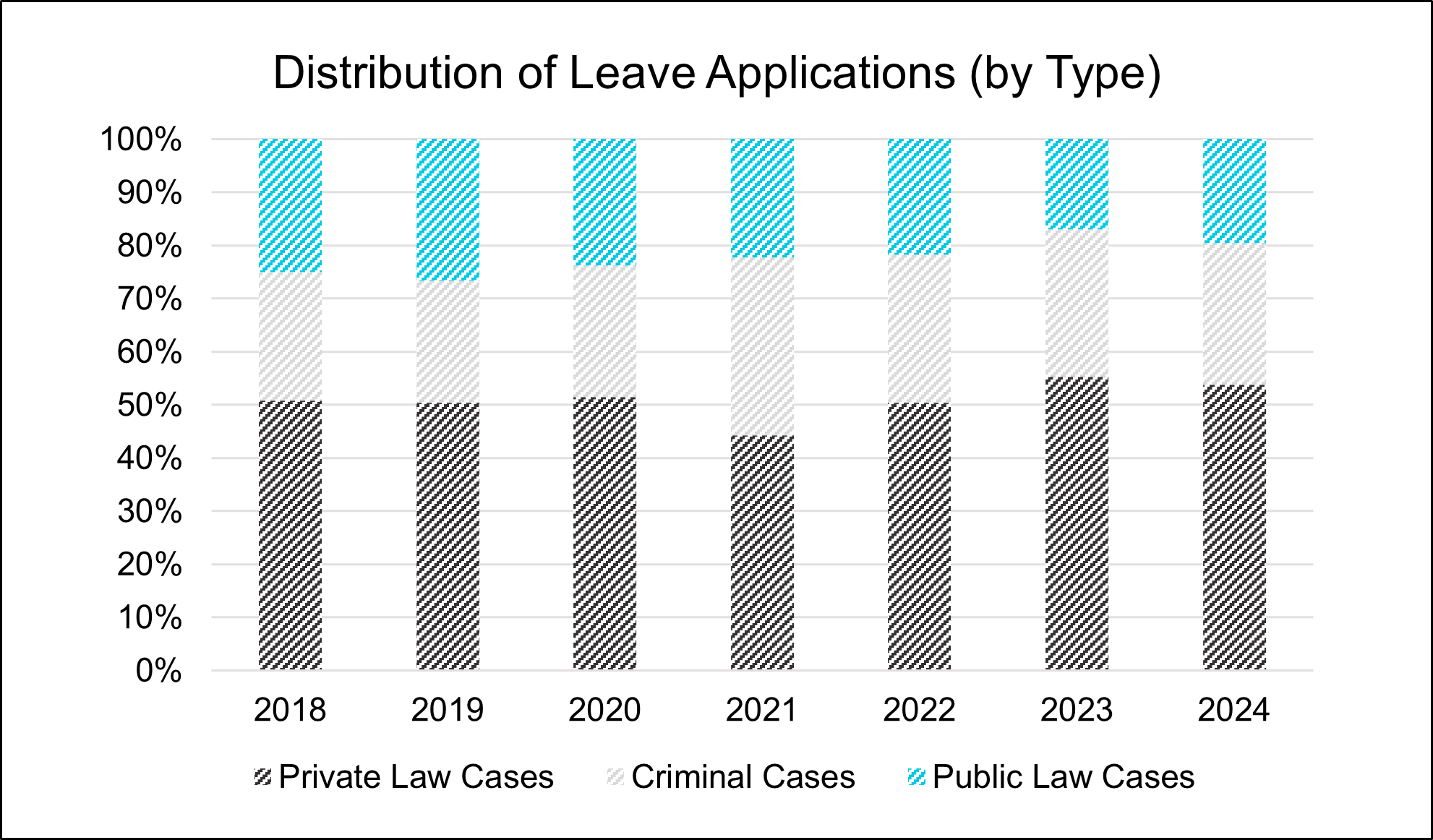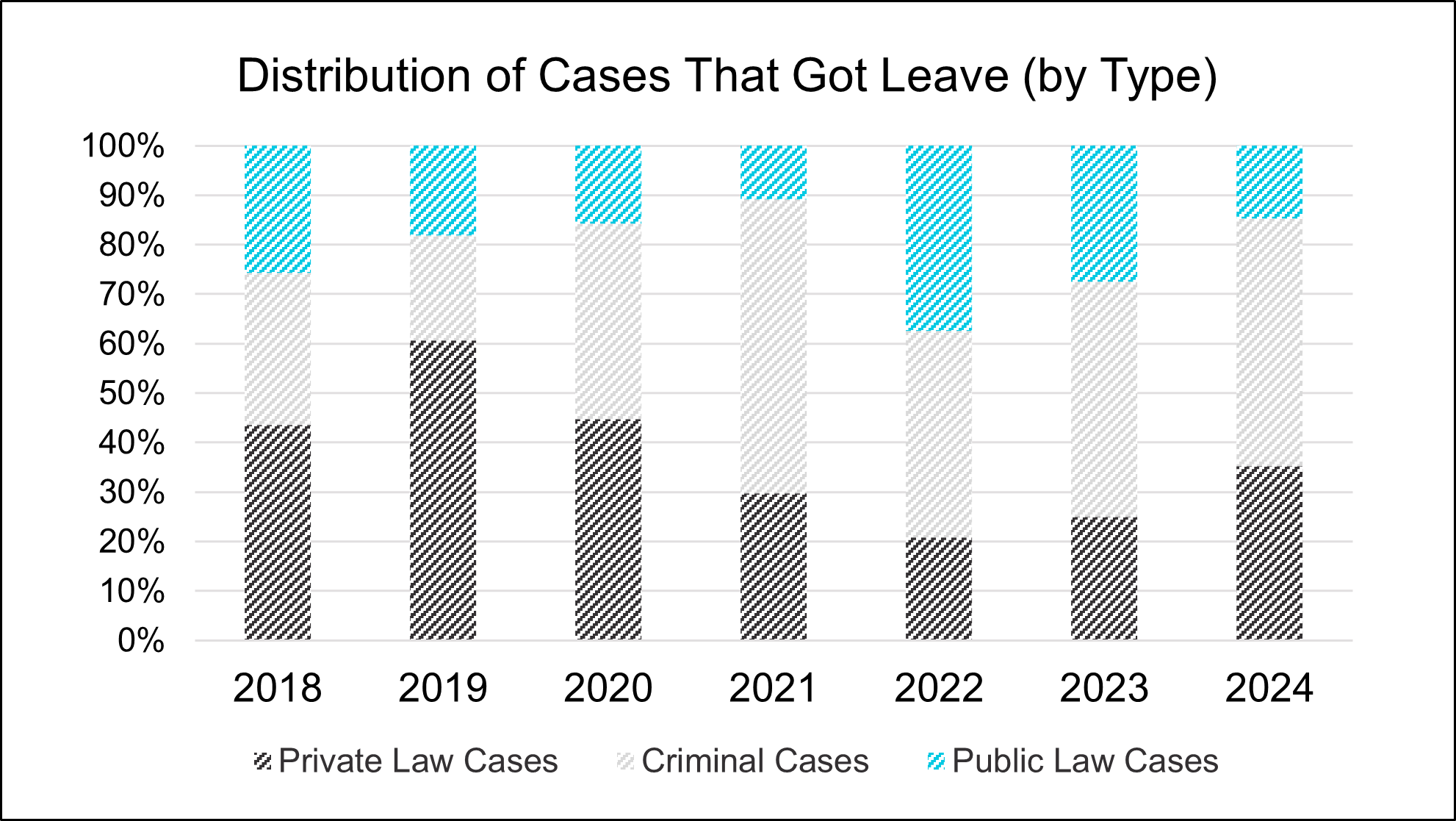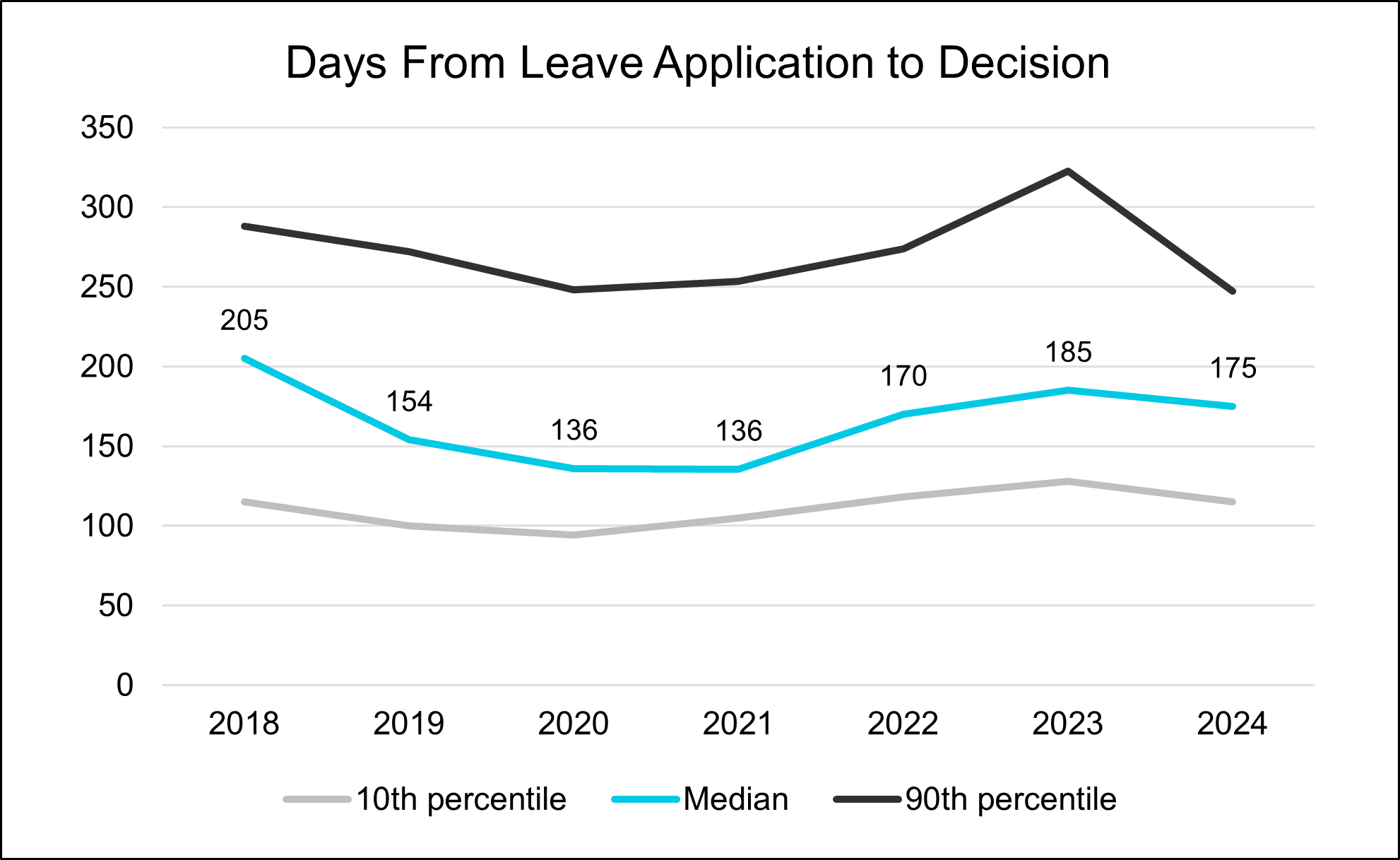Getting Leave to the Supreme Court of Canada: 2024 by the Numbers
Our readers know that we maintain a database that includes information relating to every Supreme Court of Canada leave decision from January 1, 2018 onward. While we use that database to maintain a machine learning model to predict the likelihood of particular cases getting leave to appeal, we also use it to look at trends at the Court more generally. In this blog post, we provide a year in review of the Supreme Court of Canada’s leave application decisions in 2024.
The Number of Leave Applications Granted Returns to More Normal Levels
In terms of the number of leave applications granted, 2024 was a bit low compared to historical averages, but still much higher than the low watermark of 2022. In 2024, we saw the Supreme Court of Canada grant leave to appeal in 34 leave applications. This is a drop from the 40 leave applications granted in 2023, but still a significant increase from the historical low of just 24 cases in 2022.
Slight Decreases in Both the Number of Leave Applications and Grant Rates
The small drop in the number of leave applications granted in 2024 compared to 2023 was driven by minor drops in both the number of leave applications filed and the rate of leave applications granted.
As set out in the graph below, 2024 saw a small drop in the number of leave applications decided overall.
Notably, there was a proportionately larger drop in leave applications filed by self-represented applicants from the high watermark of 184 leave applications in 2023 to 149 leave applications in 2024, though this number is still relatively high. While there was a minor drop in the number of leave applications filed where the applicant was represented by counsel in 2024, this remains in the usual range that we’ve observed in the last several years.
Also contributing to the decreased number of leave applications being granted was a slightly lower rate of leave applications being granted. As set out in the graph below, the Supreme Court of Canada granted leave to appeal in 6.4% of cases in 2024. This is a small drop compared to last year’s rate of 6.9%. However, once self-represented leave applicants are filtered out, the rate of leave applications granted increases to 8.9%. This is a drop from the 2023 rate of 10.1%, but it remains roughly in line with recent historical averages.
A Minor Rebound for Private Law Cases?
In terms of the subject matter, while we keep very granular data about the types of cases that the Supreme Court of Canada grants leave to, for present purposes its useful to group cases into three broad categories: private law cases, criminal cases, and public law cases.
Our data shows that in terms of subject-matter of leave applications brought to the Supreme Court, over half of those leave applications (53%) decided in 2024 were private law cases, with criminal cases taking the lion’s share of the remainder.
When it comes to leave applications granted, however, the landscape shifts. Just 35% of cases granted are private law cases. The lion’s share of cases in which leave was granted in 2024 were criminal law matters, as in most recent years.
While still relatively low, this does represent an increase in the Court’s private law docket. In 2023, just 25% of cases that got leave were private law cases, while in 2022 it was just 21%. Thus, after a few years where some commentators suggested that the Court had all but abandoned hearing private law disputes, there is some sign that the Court is re-engaging in private law matters.
The Timeline From Leave Application to Decision
2024 saw good news in the timeline from leave application to decision, reversing a potentially worrying trend.
Between 2018 and 2020, the Court was deciding leave applications increasingly quickly, with the median number of days to a leave application decision dropping from 205 days in 2018 to just 136 days in 2020. However, after holding constant over 2021, those numbers were creeping back up. By 2023, the median case took the Court 185 days to decide. This figure dropped slightly in 2024, with the median case taking just 175 days to decide.
Perhaps the most noticeable trend this year is the significant drop in the 90th percentile of cases. In most years, the changes across the distribution move relatively similarly. However, in this year, the 90th percentile of cases (i.e., the cases that are in the top 10% of cases by length of time from leave application to decision) dropped disproportionately. In 2023, the Court decided 90% of leave applications within approximately 10.5 months, and this dropped to just eight months in 2024. This suggests that while the Court has been working to decide all leave applications more quickly, it has specifically tried to avoid leave applications going undecided for too long.
Conclusion
The data for 2024 mostly shows business as usual when it comes to leave applications. While the pipeline of cases remains low compared to longer term averages (when the Supreme Court might hear 60-100 cases per year), the number of leave applications granted is roughly on par with recent historical experience. Moreover, the speed at which the Supreme Court of Canada is deciding leave applications has stabilized, after a few years of a worrying trend.
For civil and commercial litigators, there are signs that the Supreme Court is becoming more interested in private law cases. After a flurry of significant private law cases in the late 2010s through 2020, the Supreme Court of Canada granted leave to substantially fewer private law cases from 2021 through 2023. Those numbers have rebounded in 2024.

